Illinois artist Jan Schmuckal’s beautiful oil painting, “Wild Lilies” (2014, 24″ x 36″) offers a great example of the compositional principle of protection and prospect that is key to how frames work with pictures—which made my job of designing the frame simple.
The tree branches in Schmuckal’s foreground shelter the viewer, providing protection while the viewer ponders the prospect of a sunny lily-littered pond and the shore and hills on the other side. It’s a compelling and effective landscape painting technique that appeals to two complementary psychological necessities, as well as to the entire essence and meaning pictures have held for human beings as reflective, imaginative creatures who are also vulnerable as we navigate an often terrifying world. Of course, paintings don’t always or necessarily provide some protective foreground element. When a picture doesn’t, it depends on the frame for that effect: the frame is an interior window frame in the room where we stand, protected. When a picture itself does provide that element, an ideal frame, it seems to me, sustains those things in the picture evoking a sense of protection.
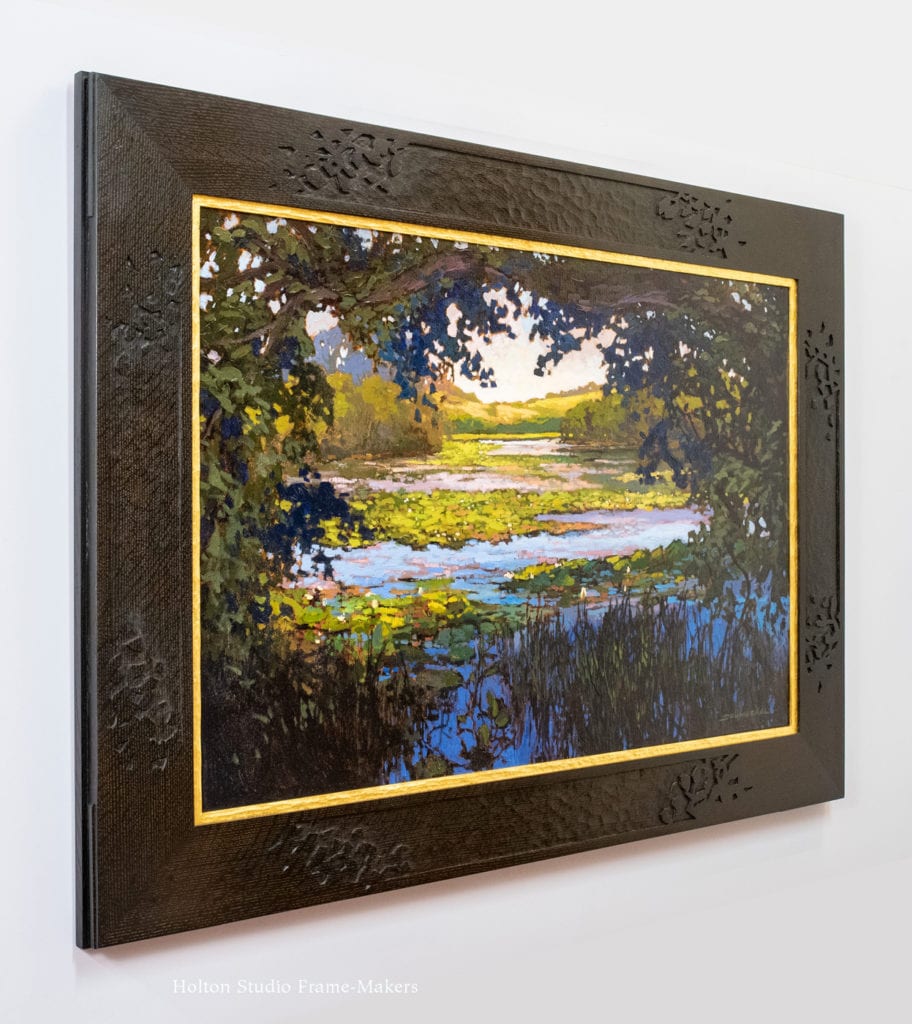 That’s what I aimed for here, with a flat 4″ wide mitered frame in quartersawn white oak stained a deep, shadowy brown, and chiseled in low relief with a simple and subordinate interpretation of the painter’s chiseled brush-rendering of shaded leaves silhouetted against the sunny outlook. The frame simply sustains the painted branches and leaves with which Schmuckal framed the scene within her canvas. The subtle gouged texture of the recessed panels echoes the texture of the painting’s surface, and is complemented by the higher smooth surfaces. With a carved gilt liner to complement the dark frame, the framing also echoes the painting’s crucial complements of sunshine and shadow. Finally, the corners have proud splines pinned with dowels just visible on the face of the frame (strong joinery, its strength clearly visible, being another thing that satisfies us on a primal level—perhaps as indispensable to a durable architecture that can promise us protection). A back-frame steps out and softens the frame’s transition to the wall, and also keeps the 1-1/2″ deep frame from being too severe and boxy.
That’s what I aimed for here, with a flat 4″ wide mitered frame in quartersawn white oak stained a deep, shadowy brown, and chiseled in low relief with a simple and subordinate interpretation of the painter’s chiseled brush-rendering of shaded leaves silhouetted against the sunny outlook. The frame simply sustains the painted branches and leaves with which Schmuckal framed the scene within her canvas. The subtle gouged texture of the recessed panels echoes the texture of the painting’s surface, and is complemented by the higher smooth surfaces. With a carved gilt liner to complement the dark frame, the framing also echoes the painting’s crucial complements of sunshine and shadow. Finally, the corners have proud splines pinned with dowels just visible on the face of the frame (strong joinery, its strength clearly visible, being another thing that satisfies us on a primal level—perhaps as indispensable to a durable architecture that can promise us protection). A back-frame steps out and softens the frame’s transition to the wall, and also keeps the 1-1/2″ deep frame from being too severe and boxy.
A frame should feel like a natural and even inevitable complement to the painting—its proper home. It’s easy to fulfill that purpose when a painting so beautifully captures a fundamental principle of its companion art, the art of the frame-maker.
Process photos—
Visit Jan Schmuckal’s website…
« Back to Blog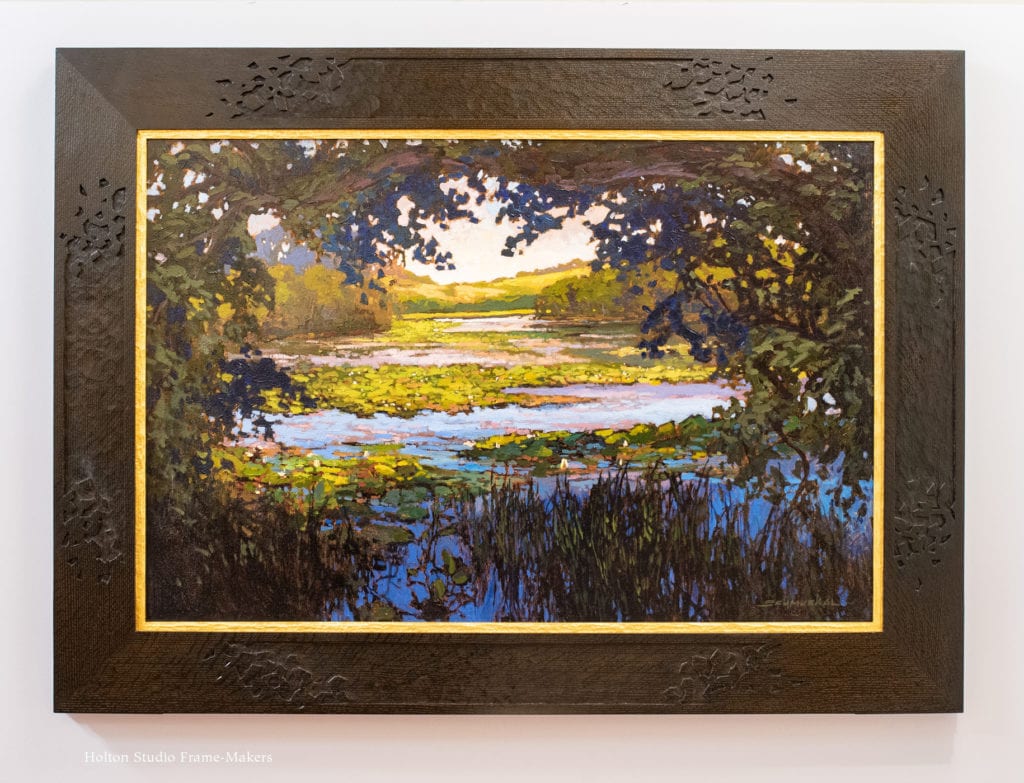
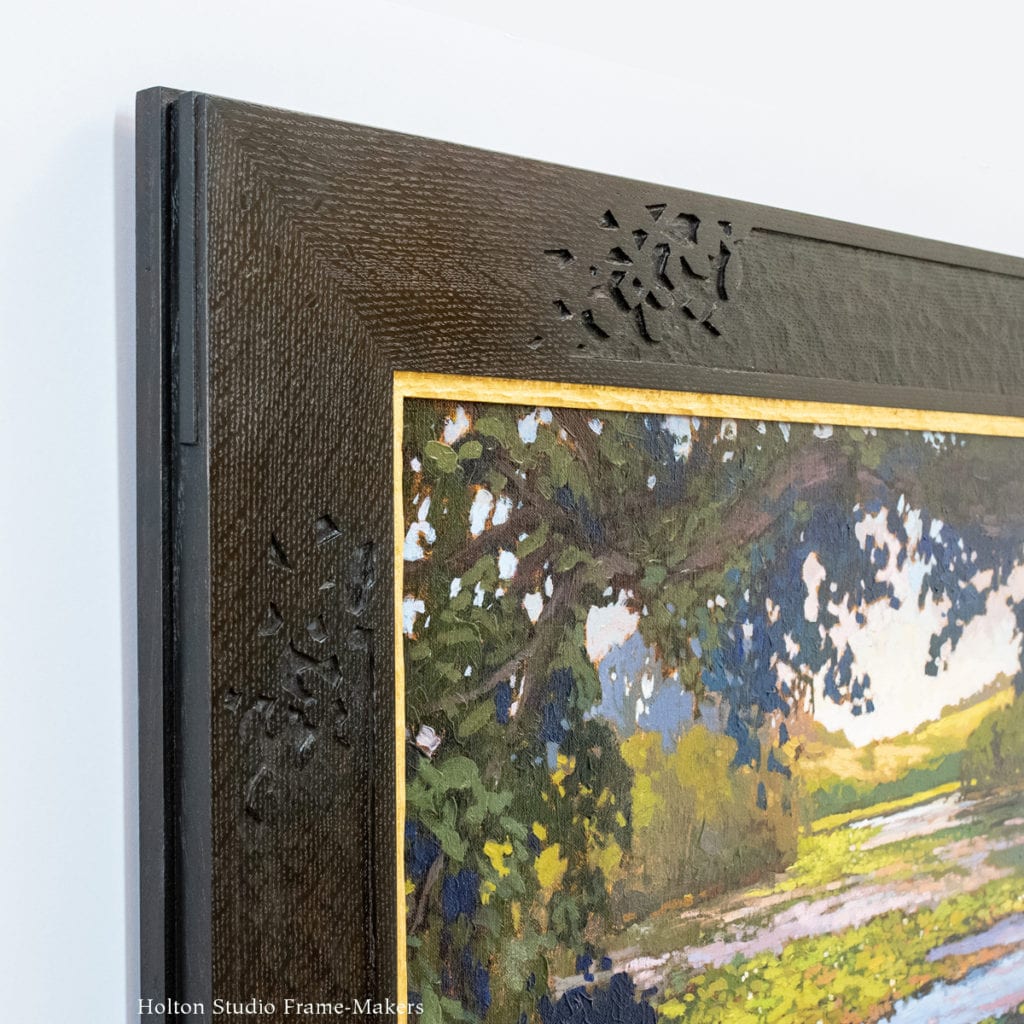
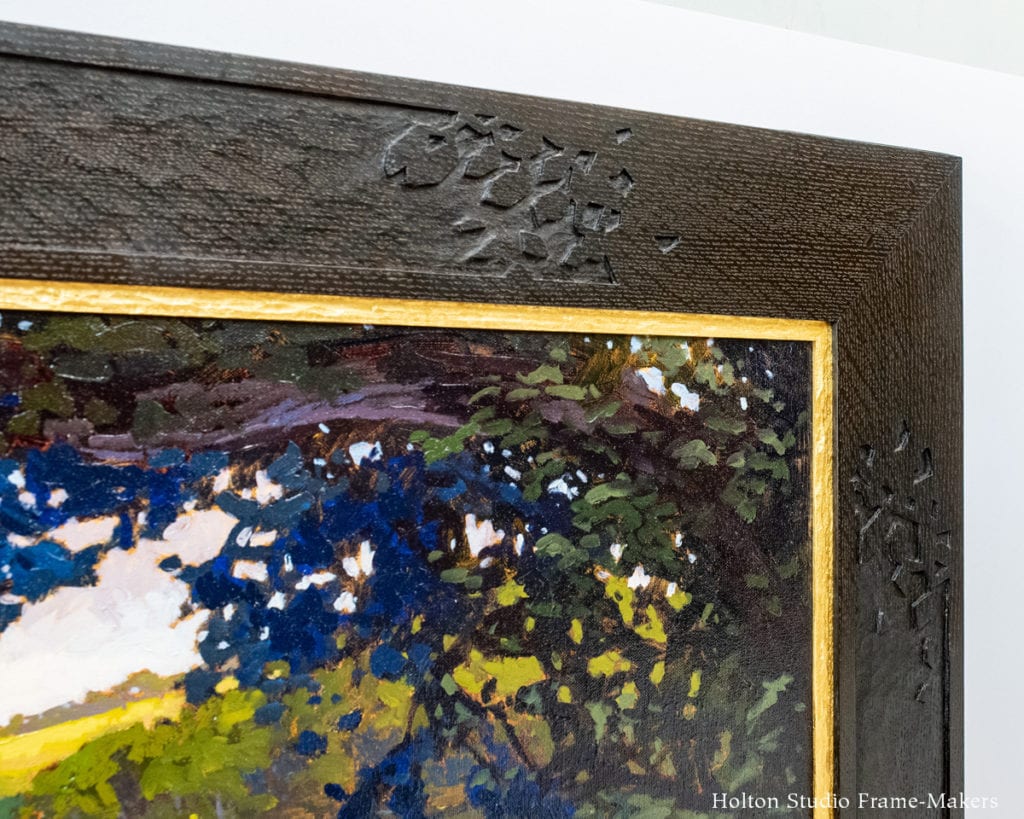
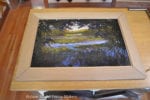
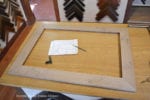
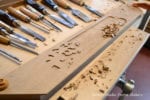
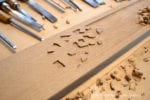
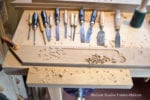
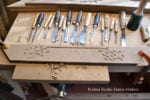
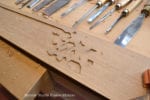
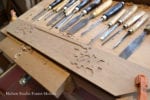
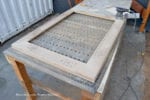
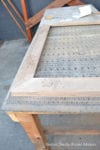
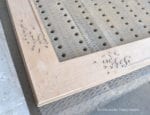
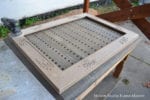
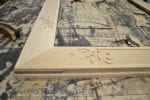
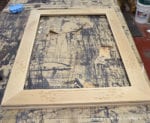
love love the quarter sawn oak! finding you through the Jan Schmuckal website feels like such a gift!!!